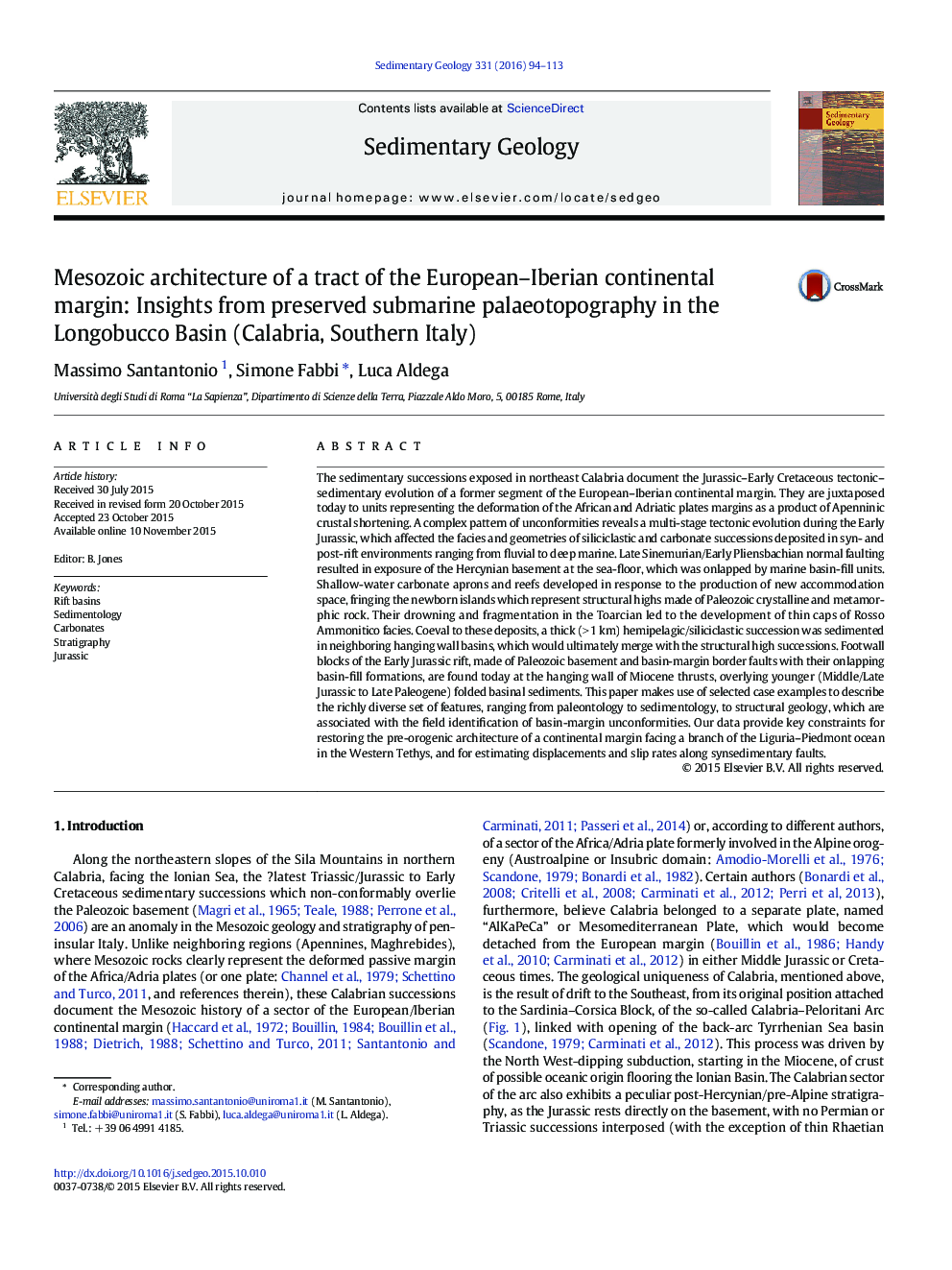| کد مقاله | کد نشریه | سال انتشار | مقاله انگلیسی | نسخه تمام متن |
|---|---|---|---|---|
| 4689138 | 1636032 | 2016 | 20 صفحه PDF | دانلود رایگان |

• The stratigraphy of the Longobucco/Caloveto Basin has been greatly refined.
• Jurassic basin-margins in Calabria are identified as of tectonic origin.
• They are identified using sedimentology, paleontology, and field/structural geology.
• Megaclastic belts run parallel to the strikes of eroded Jurassic footwall blocks.
• Ephemeral coral reefs fringed basement islands and are capped by condensed pelagics.
The sedimentary successions exposed in northeast Calabria document the Jurassic–Early Cretaceous tectonic–sedimentary evolution of a former segment of the European–Iberian continental margin. They are juxtaposed today to units representing the deformation of the African and Adriatic plates margins as a product of Apenninic crustal shortening. A complex pattern of unconformities reveals a multi-stage tectonic evolution during the Early Jurassic, which affected the facies and geometries of siliciclastic and carbonate successions deposited in syn- and post-rift environments ranging from fluvial to deep marine. Late Sinemurian/Early Pliensbachian normal faulting resulted in exposure of the Hercynian basement at the sea-floor, which was onlapped by marine basin-fill units. Shallow-water carbonate aprons and reefs developed in response to the production of new accommodation space, fringing the newborn islands which represent structural highs made of Paleozoic crystalline and metamorphic rock. Their drowning and fragmentation in the Toarcian led to the development of thin caps of Rosso Ammonitico facies. Coeval to these deposits, a thick (> 1 km) hemipelagic/siliciclastic succession was sedimented in neighboring hanging wall basins, which would ultimately merge with the structural high successions. Footwall blocks of the Early Jurassic rift, made of Paleozoic basement and basin-margin border faults with their onlapping basin-fill formations, are found today at the hanging wall of Miocene thrusts, overlying younger (Middle/Late Jurassic to Late Paleogene) folded basinal sediments. This paper makes use of selected case examples to describe the richly diverse set of features, ranging from paleontology to sedimentology, to structural geology, which are associated with the field identification of basin-margin unconformities. Our data provide key constraints for restoring the pre-orogenic architecture of a continental margin facing a branch of the Liguria–Piedmont ocean in the Western Tethys, and for estimating displacements and slip rates along synsedimentary faults.
Journal: Sedimentary Geology - Volume 331, January 2016, Pages 94–113